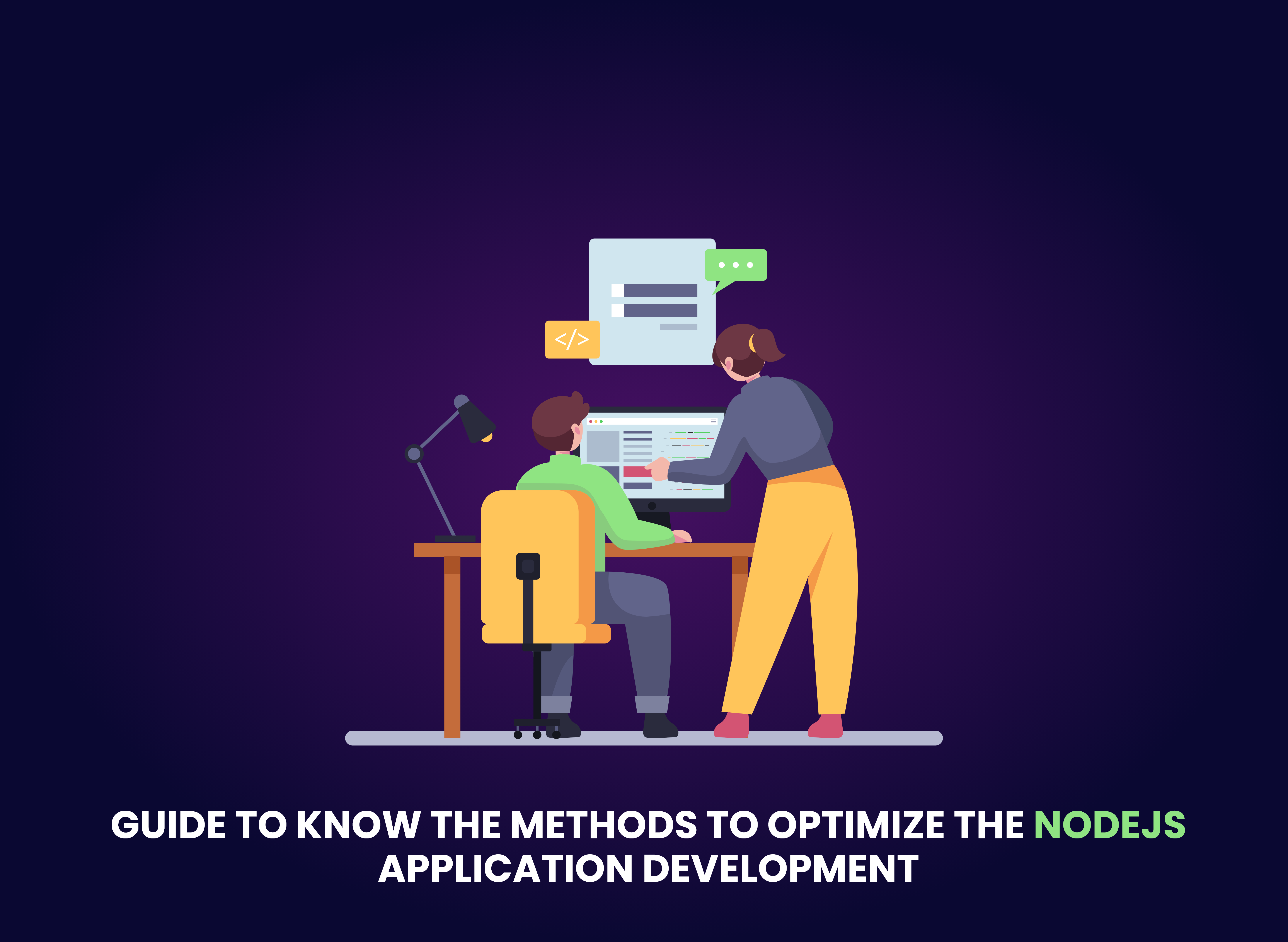Nodejs has established itself as a major tool, technology, and framework that allows them to control different operating systems with a single solution. Because Node.js is the most stable and trustworthy JavaScript framework, huge organizations with a lot of traffic, including eBay, Microsoft, Yahoo, Netflix, and LinkedIn, are employing Node.js application developers without hesitation.
But now the question arises- How can you optimize the Nodejs application?
In this post, we’ll be discussing the top 5 methods that can assist you in enhancing the operations of your app.
- Don’t Overlook Caching
Caching is a popular method in the Nodejs development service. It takes place on both the client and server sides. Client-side caching refers to the temporary storage of HTML pages, CSS stylesheets, JS scripts, and multimedia files. Client caches reduce data costs by storing frequently used data locally on the browser or a content delivery network (CDN).
When a browser saves frequently used data locally or on a CDN, this is an example of client caching. The concept is that if a user views a site and then returns, the site should not have to redownload all of its resources.
- Implement a Reverse Proxy Server
Node.js is built for scalability to a larger extent than other application servers, and its web server-side can manage a lot of Internet traffic quite effectively.
Installing a reverse proxy server in front of your Node.js server is the first step in improving application performance if you have a high-traffic site. This protects the Node.js server from direct Internet traffic and gives you a lot of flexibility when it comes to employing numerous application servers, load balancing, and caching content.
- Logging allows you to keep track of your activities.
When it comes to Nodejs development services, you should not overlook logging. To begin, ensure that your application programme is up and running and free of catastrophic errors. If you see something weird in your app at any point during development, it's time to figure out what code is causing the problem. You can also quickly track activity and API process traffic with Logging.
Most people use console.log (LogOutput) as a logging procedure since it will automatically insert some logs into the output standard (stdout) and console. error (Log Error) will also go into the error standard (stderr).
However, if you consult with a professional web app development firm, they will advise you to utilize a more popular and effective logging module.
- Methods for Managing Data that are More Efficient
Because it streamlines system procedures and improves overall app efficiency, optimization is critical to performance. What can be optimized in a Node.js application, you might wonder? Begin by examining how data is handled. A CPU/IO-bound task, such as a database query or a slow API request, might cause Node.js apps to be slow.
Data is retrieved in most Node.js applications by sending an API request and receiving a response. What's the best way to achieve that? Pagination - splitting replies into batches of content that may be browsed via selected-response requests — is a typical strategy. Pagination can be used to optimize the response while also preserving the larger quantity of data supplied to the user client.
- Using a Load Balancer, you may scale over multiple machines.
Horizontal scaling of your Node.js application on many machines is comparable to scaling over multiple cores on a single system. Your programme can be deployed to operate on several machines as long as it can function as an independent process.
The usage of a load balancer to distribute incoming traffic to the servers is a must (similar to how the cluster module is used to direct traffic to the child worker process). To avoid a single point of failure, you can use numerous load balancers that point to the same set of servers.
- To expedite the development process, parallel runs are used.
The Node.js application must retrieve a large amount of data to render the HTML page for any dashboard. You'll also need to make many internal API calls to get various data. There are a lot of functions, and this procedure can take a long time, which can damage the application's speed. This is why many businesses prefer to hire web app developers to assist them in professionally retrieving data.
In actuality, you may make the following hypothetical calls while generating the dashboard: To render the HTML page for any dashboard, the Node.js application must retrieve a lot of data from the dashboard.
- Use gzip Compression
Switching to gzip compression can make a big difference in how fast your web app runs. When a browser that supports gzip requests a resource, the server can compress the response and deliver it to the browser. If you don't utilize gzip to compress your static resource, the browser may take longer to load it.
To serve static content in an Express app, utilize the built-in express.static() middleware. The compression middleware can also be used to compress and serve static material. This is a snippet that demonstrates how to accomplish it.
- Don't keep too much information in sessions.
The session data in a typical Express web project is saved in memory by default. When you save too much data in a session, the server experiences significant overhead. To maintain session data, you can either switch to another type of storage or try to keep the quantity of data saved in the session to a minimum.
For example, instead of keeping the complete object when users log into your app, you can just store their ID in the session. Following that, you can retrieve the item from the ID on each request. To store session data, you may potentially use MongoDB or Redis.
Final Thoughts
Now you have everything you need to take advantage of performance and features and then create Nodejs applications that your consumers will enjoy.
Remember that optimization is necessary but insufficient. You must also consider security.
This is where the importance of Nodejs comes in!



